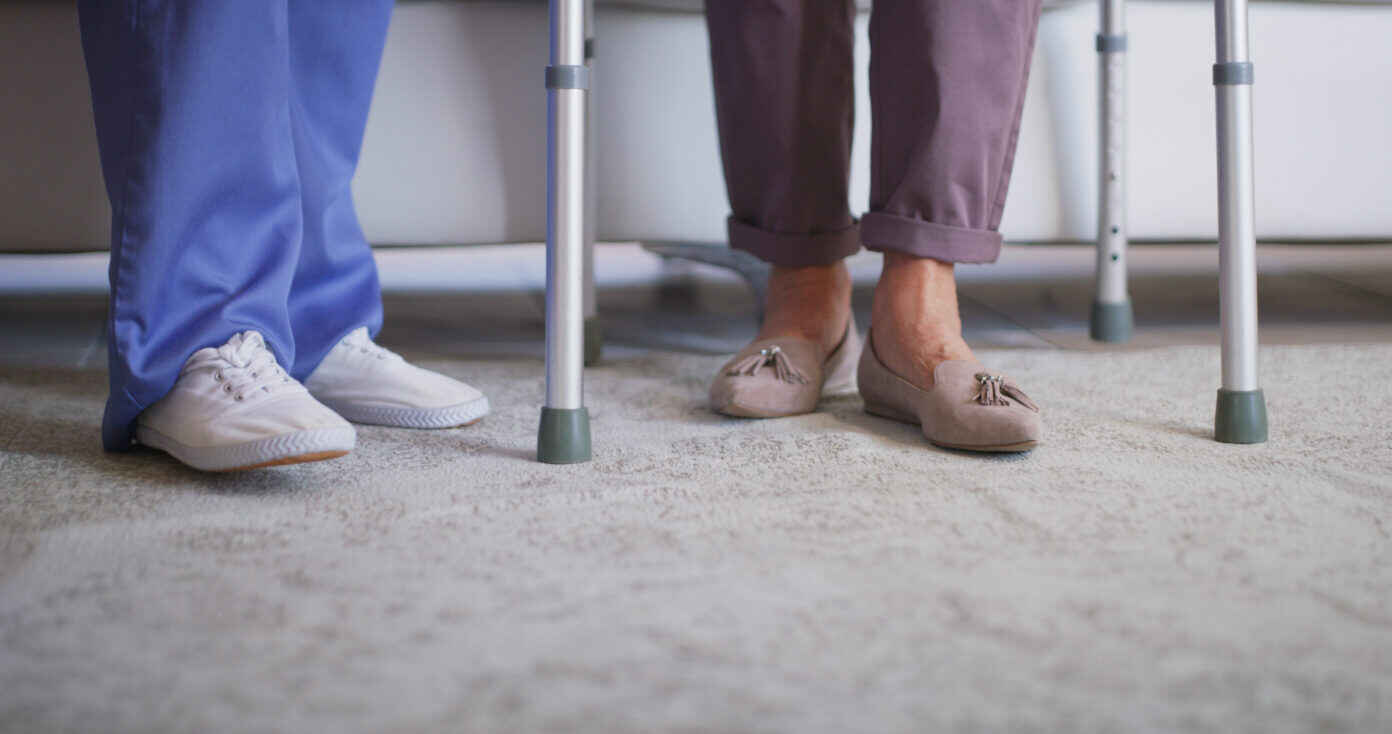The End of the Public Health Emergency: Can the ADA Mitigate Risks to People with Disabilities?
August 25, 2022
Overview
The end of the COVID-19 public health emergency (PHE) will create additional risks for people with disabilities. During the pandemic, under the authority granted by the declaration of the PHE, federal agencies took several steps to allow state Medicaid agencies to maintain health care coverage and Medicaid-funded home and community-based services for people with disabilities. Federal agencies also granted state Medicaid agencies a range of flexibilities, including changes to Medicaid enrollment and assessments, intended to facilitate enrollment in Medicaid and the maintenance of coverage while reducing COVID-19 exposure risks.

The passage of the Americans with Disabilities Act (ADA) 32 years ago marked a turning point in the struggle to end discrimination against people with disabilities in the U.S. For decades, people with disabilities sought access to —and a place within — vital spheres of community life. The ADA’s ban on discrimination in public services and programs, as well as in employment and public accommodations, promised to usher in a new era of inclusion for people with disabilities.
Enforcement of the ADA has enabled people with disabilities to leave hospitals, nursing facilities, and other institutional settings, and to receive health care and other critical services in their homes and elsewhere in the community. But this work was incomplete when the COVID-19 pandemic began. Throughout the pandemic, many people with disabilities lived in nursing facilities, psychiatric hospitals, and other institutional settings that left them particularly vulnerable to infection and serious illness. People with disabilities also faced the loss of home and community-based services as the risk of infection and shortage of direct service providers strained existing service delivery systems.
When the federal government ends the COVID-19 public health emergency (PHE), people with disabilities are likely to face a range of challenges that threaten them with the disability discrimination banned by the ADA. Indeed, the ADA’s promise to end the exclusion of people with disabilities from every sector of our public life will be tested anew.
The initial surges of COVID-19 exposed many people with disabilities to a heightened risk of infection and serious illness. People with disabilities residing in nursing facilities and other congregate care settings during the pandemic experienced higher rates of infection and death than those who lived at home. Those living in community-based settings during the pandemic faced the loss or reduction of vital services as direct service provider networks, including personal care attendants and other long-term care providers, experienced heightened strain. COVID-19 also increased attention to shortages in the long-term care workforce and grave racial disparities within it.
The end of the PHE will create additional risks for people with disabilities. During the pandemic, under the authority granted by the declaration of the PHE, federal agencies took a number of steps to allow state Medicaid agencies to maintain health care coverage and Medicaid-funded home and community-based services for people with disabilities. Federal agencies also granted state Medicaid agencies a range of flexibilities, including changes to Medicaid enrollment and assessments, intended to facilitate enrollment in Medicaid and the maintenance of coverage while reducing COVID-19 exposure risks.
Once the PHE ends, the process of unwinding pandemic-related Medicaid flexibilities will expose people with disabilities to potential loss of coverage and the vital services to which they had access during the pandemic. Absent well-developed state plans to resume annual eligibility determinations, people with disabilities who have moved during the pandemic or lack the ability to collect and submit required information through states’ technological enrollment systems will face coverage terminations due to flaws in states’ processes. Even where improper terminations are successfully challenged, people with disabilities may face devastating coverage gaps.
At the end of the PHE, states are also likely to phase out many changes to service models designed to expand access to home and community-based services by people with disabilities during the pandemic. Allowing these flexibilities to expire, which were approved by federal agencies to facilitate critical services during the pandemic, threatens to reduce the services that people with disabilities needed prior to the pandemic but only received during the pandemic due to these flexibilities. This, coupled with the continued workforce shortage crisis, could create a perfect storm, leaving individuals without necessary services to live and thrive in their own communities.
The 32nd anniversary of the ADA’s passage presents challenges and opportunities that will test our commitment to the ADA’s promise of inclusion in the years to come. The COVID-19 pandemic revealed the limits of existing systems but spurred innovations with potential to improve access and potential outcomes for people with disabilities in many areas.
This post was written by Sarah Somers, J.D., Senior Attorney, Network for Public Health Law – Southeastern Region Office and Geron Gadd, J.D., Senior Attorney, National Health Law Program.
The Network for Public Health Law provides information and technical assistance on issues related to public health. The legal information and assistance provided in this document do not constitute legal advice or legal representation. For legal advice, readers should consult a lawyer in their state.
Support for the Network is provided by the Robert Wood Johnson Foundation (RWJF). The views expressed in this post do not represent the views of (and should not be attributed to) RWJF.
